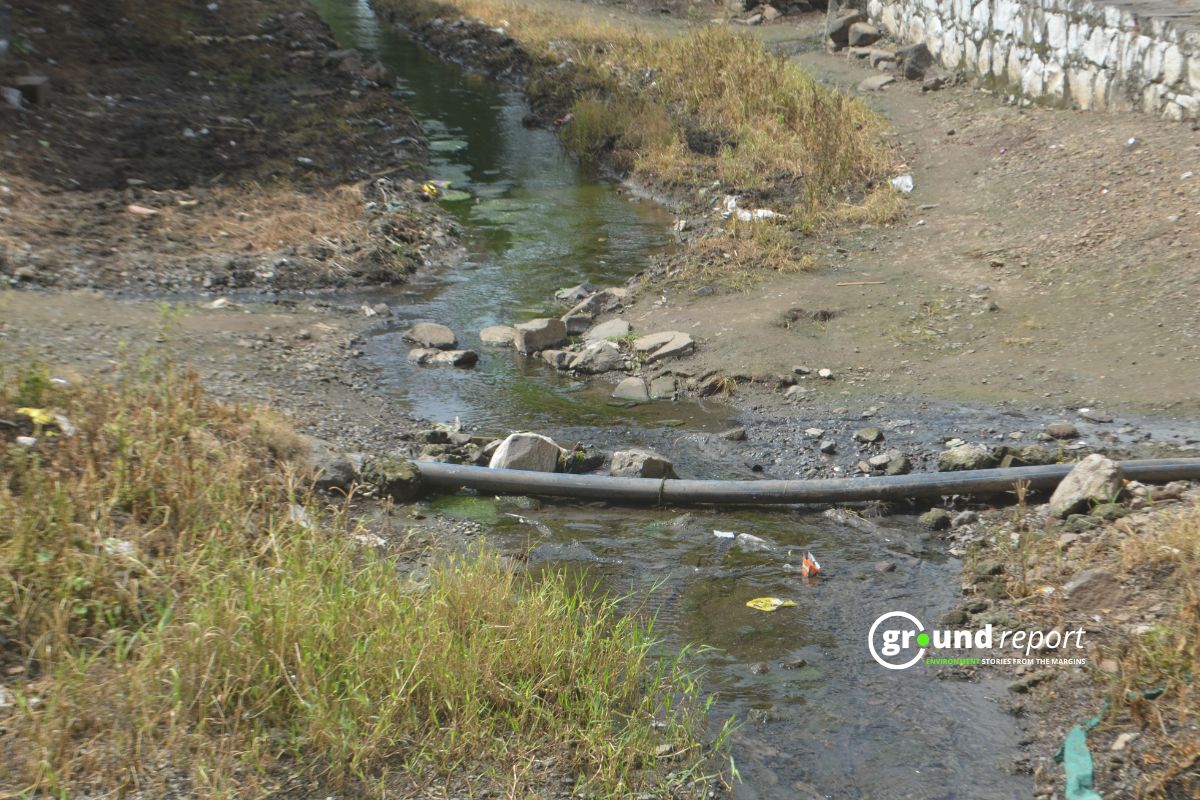A short video circulating on social media uses the BJP campaign song “Modi Hai To Mumkin Hai” in a sharply ironic way. In the clip, the upbeat song, which means “Modi makes it possible”, plays over footage of crumbling public works. One viral example shows a man in a checked shirt and jeans carefully balancing on a narrow concrete ledge above stagnant water next to an unfinished construction site, while the song’s music plays in the background. The contrast is striking, a promise of “anything is possible” juxtaposed with broken roads and garbage in the real world.
The slogan “Modi Hai To Mumkin Hai” was introduced as a key BJP campaign line ahead of India’s 2019 elections. At the time, senior party leaders said the phrase reflected Prime Minister Narendra Modi’s image as a decisive “doer.” Arun Jaitley, then BJP finance chief, even noted that the slogan literally means “Modi makes it possible”.
This year the slogan was given new life in a T-Series music video featuring Bollywood stars like Varun Dhawan and Rajkummar Rao. According to the Telegraph India, that tribute video, released in October, drew heavy criticism online, with many viewers calling it propaganda. Even the actors themselves “landed in the crosshairs of netizens” and faced “severe backlash,” as some fans vowed to boycott their future films.
Now, critics of the government and ordinary users have flipped the message on its head. In dozens of posts and memes, people overlay the “Modi Hai To Mumkin Hai” tune on everyday scenes of infrastructural failures, potholed roads, unfinished flyovers, waterlogged streets and garbage piles.
The social media trend often involves simply adding the upbeat song to video clips, with captions that highlight the irony. In effect, users say they are proving the slogan wrong by showing places where it isn’t “mumkin.” The viral video mentioned above is one of many that have drawn attention: viewers can hear the cheerful chorus as a man balances on a narrow concrete edge, underlining the gap between the promise and the reality.
Social media reaction has been fast and sharp. Many viewers are sharing and commenting on these clips with amusement or frustration. Some call the campaign slogan a “self-goal” for the ruling party, joking that the song has become an anthem for India’s potholes and broken bridges.
Others express anger or disappointment that basic services remain neglected, despite bold claims. One comment on a related post summed it up: the song’s optimistic message has “turned into a mass movement against BJP,” as people use it to expose unfinished work and civic problems. Whatever their exact words, critics have seized on the catchy tune to make a political point.
The broader context is clear: a slogan that was meant to showcase achievements is now being repurposed by ordinary citizens as a soundtrack for everyday failures. As one observer noted, “If anyone sees potholes, garbage and broken infrastructure, they are making a video and adding the song”. In the end, the song has become a mirror of sorts, reflecting the public mood about infrastructure issues more vividly than any government report.
Support us to keep independent environmental journalism alive in India.
Keep Reading
Highway Halt Puts Kashmir’s Fruit Economy at Risk
MP brings back Bhavantar as farmers lose soybean harvests
Stay connected with Ground Report for underreported environmental stories.
Follow us onX, Instagram, and Facebook; share your thoughts at greport2018@gmail.com; subscribe to our weekly newsletter for deep dives from the margins; join our WhatsApp community for real-time updates; and catch our video reports on YouTube.
Your support amplifies voices too often overlooked, thank you for being part of the movement.









